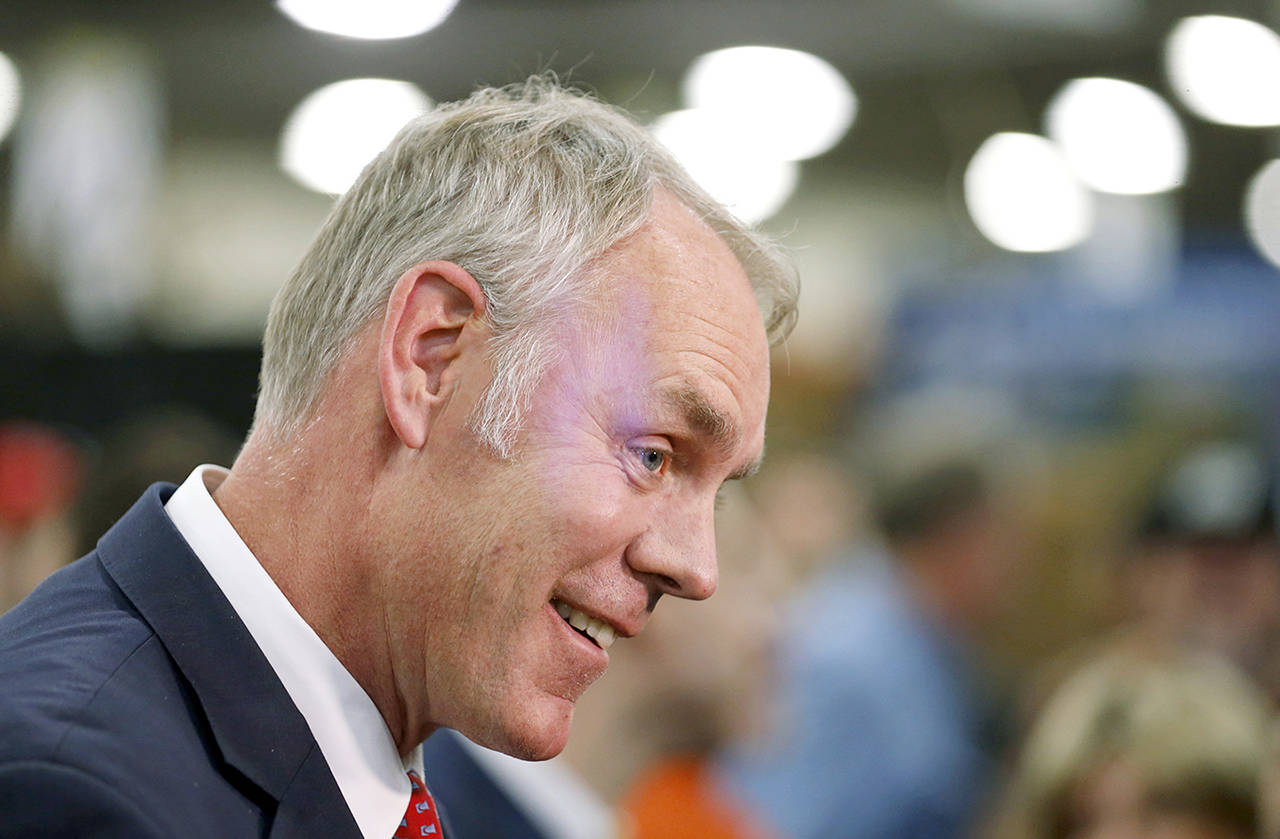By Matthew Brown and Dan Elliott / Associated Press
BILLINGS, Mont. — U.S. Interior Secretary Ryan Zinke is revamping a planned sweeping overhaul of his department with a new organizational map that more closely follows state lines instead of the natural boundaries he initially proposed, he said Friday.
The changes follow complaints from a bipartisan group of Western state governors that Zinke did not consult before unveiling his original plan last month. The agency oversees vast public lands, primarily in the U.S. West, ranging from protected national parks and wildlife refuges to areas where coal mining and energy exploration dominate the landscape.
Zinke said his goal remains unchanged: decentralizing the Interior Department’s bureaucracy and creating 13 regional headquarters.
“At present we are mismanaging and squandering our assets through a layered bureaucracy that reflects a very old department that really has not reorganized since the turn of the last century,” he said. “We will be moving assets to the front lines and moving authority to make decisions and, I would argue, better decisions to the front lines.”
The redrawn map shows that states such as Colorado, New Mexico and Wyoming would fall within a single region instead of being split among multiple regions. Other states remain divided, including California, Nevada, Montana and Oregon.
Aspects of the original map remain, with some regions labeled according to river systems, such as the Upper Colorado Basin and the Missouri Basin. But the new lines tend to cut across geographic features and follow state lines, not boundaries of rivers and ecosystems.
The new proposal resulted from discussions with governors, members of Congress and senior leaders at the agency, Interior officials said. Zinke spokeswoman Heather Swift said the original proposal had been a “discussion draft” rather than a finished document and was now being refined through a collaborative process.
Western Governors’ Association Executive Director Jim Ogsbury said the organization was “gratified” Zinke listened to its concerns and shifted the agency’s plan to craft changes around state boundaries.
“The governors support the Department’s goal of operating more efficiently and effectively by moving more decision making to the field,” Ogsbury said. “We look forward to additional conversations with the Department on how to further refine the plan.”
House Committee on Natural Resources spokeswoman Katie Schoettle praised Zinke’s willingness to revise the plan and criticized the Obama administration.
“We applaud Secretary Zinke for actually listening to the public and adjusting plans based on feedback, a clear departure from the previous administration,” she said.
A retired Interior Department official expressed doubts over whether the proposal would achieve Zinke’s stated desire to move decision-making closer to the field level. Steve Ellis, former deputy director of the Bureau of Land Management, the second largest branch of Interior, said the reorganization could instead add another layer of bureaucracy with 13 new regional directors.
But Ellis added that the new map was an improvement because it’s more in line with existing administrative boundaries.
Zinke, a former Republican congressman from Montana, already has imposed major changes at the 70,000-employee Interior Department. He has rolled back regulations considered burdensome to the oil and gas industry and reassigned dozens of senior officials who were holdovers from President Barack Obama’s administration.
The vision of retooling the department’s bureaucracy plays into longstanding calls from politicians in the American West to shift more decisions about nearly 700,000 square miles of public lands under Interior oversight to officials in the region.
However, some Democrats have speculated that Zinke’s true motivation for the overhaul is to gut the department, noting that more than 90 percent of its employees already work outside Washington, D.C.
Zinke contends that he’s trying to streamline Interior’s management of public lands by requiring all of the agencies within the department to use common regional boundaries, including the Bureau of Land Management, National Park Service and Fish and Wildlife Service.
Zinke said Friday that his focus was on three areas: improving recreational access, simplifying environmental reviews and speeding up the permitting process for energy exploration and other projects on public lands.
Congress has the final word on the proposal.
Talk to us
> Give us your news tips.
> Send us a letter to the editor.
> More Herald contact information.

























